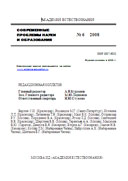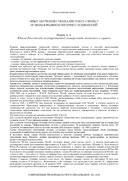PDF-версия статьи


|
The objectives compared in a simile do not usually belong to the same semantic groups or classes. A person can be compared to an animal or a thing. By way of illustration, in the simile “He was as cunning as a fox” a man’s characteristic is compared with a fox’s one. Another similar example is “He swims like a fish”. Actually, a fish is so good at swimming. The action of “swimming” of a man is compared with that of a fish. That is to say he swims very well.
Let us consider another example, “He was like a bull in a china shop, treading on everyone’s feet and apologize constantly.” In this case, only the topic “He” and the image of the simile “a bull in a china shop” are given out. The point of similarity, however, is implicit. To analyze this simile, we can state the two propositions explicitly as follows: 1. He is extremely careless and clumsy. 2. A bull in a china shop is extremely careless and clumsy. Subsequently, the implicit information becomes apparent.
The point of similarity turns out to be “is extremely careless and clumsy”. In short, similes and metaphors include three basic elements. They are: 1. TOPIC: the topic of the first proposition (non - figurative), i.e., the thing really being talked about. 2. IMAGE: the topic of the second proposition (figurative), i.e., what is being compared with 3. POINT OF SIMILARITY: this is found in the comments of the two propositions involved. To sum up, it is advisable to write out the propositions, which are basic to comparisons. That the topic, image, point of similarity have been identified is helpful to interpret simile and metaphor. Below some similes analyzed:
like a red rag to a bull – Spanish bull fights are well-known throughout the world. The brave matador shakes his cape in front of the bull’s nose, enraging it. It was believed that the red lining of the cape excited the bulls and made them even more fearful opponents. Sad to say, it appears that bulls are colour blind and react to the movement of the cape, not to its colour. However, that was not widely known when the Spanish bull-fighting practice found its way into our simile like a red rag to a bull. The phrase is used to mean ‘like to cause great annoyance or anger’, as in this example from a nineteenth century magazine: ‘George II hated books, and the sight of one in a drawing room was as a red rag to a bull’. It is often used in connection with people who get angry very quickly.
like a bull in a china shop is also uncomplimentary. The china shop refers to shops which have existed since the sixteenth century when traders started bringing back fine porcelain from China. The power of the image lies in the juxtaposition of the clumsy bulk of the bull with the delicacy of the china. The phrase applied to somebody who is very awkward physically and keeps knocking things to the floor and breaking them. By extension it can be used of anyone behaving in a rough assertive way. E.g.: ‘In the short time Jack was with us, he upset every member of my family. He was like a bull in a china shop’ [2, 316].
References:
1. Pickering D. Cassel’s Dictionary of Proverbs. – London, Cassel & Co., 2001.
2. Flavell L. & R. Dictionary of idioms and their origins. Lomdon, Kyle Cathie Ltd, 2006.
ОПУБЛИКОВАНО
Moldir B.Shoimanova, the Candidate of Philological Sciences, Aigerim K.Turdaliyeva Linguo-cultural aspect of simile in the English language . // Современные проблемы науки и образования - 2013.-№6. (приложение "Филологические науки"). - C. 3